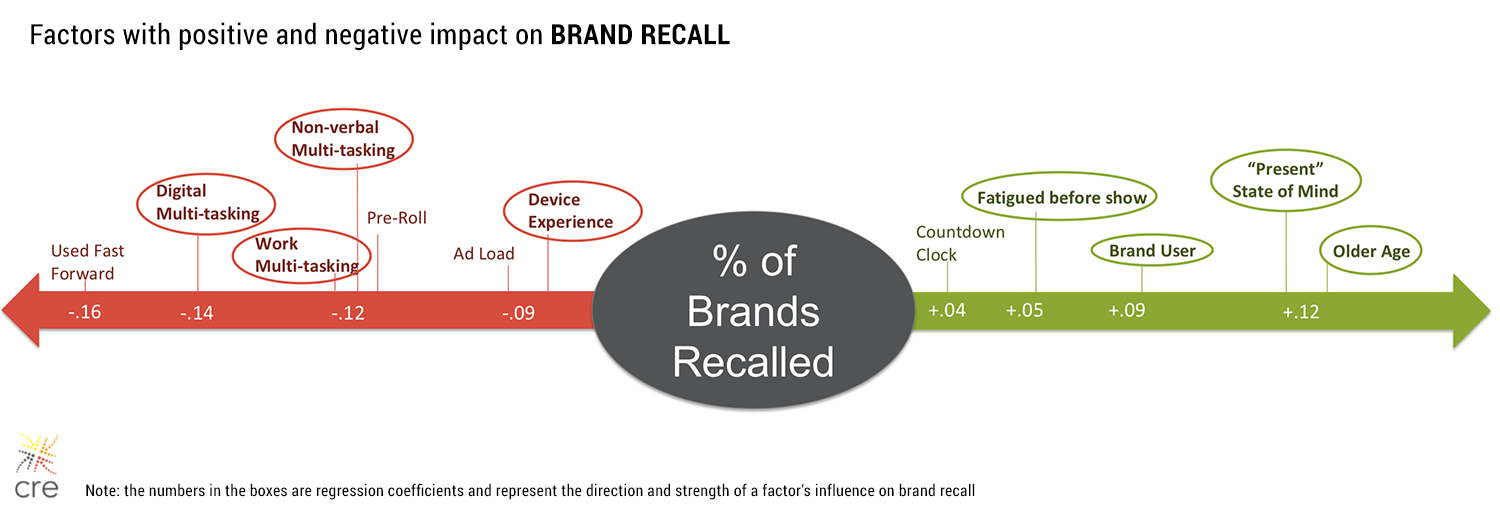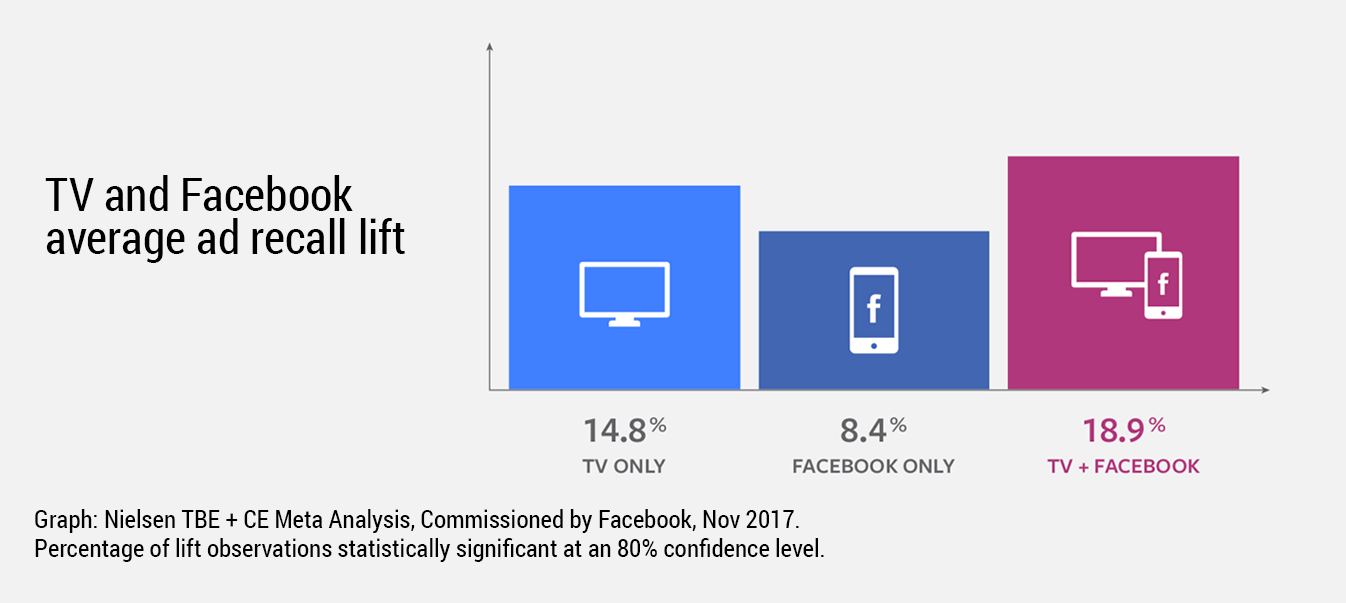
Differences in media consumption across devices. Can we easily compare mobile, desktop and tv?
For many years TV undisputedly remained in focus as the strongest medium along with its typical disrupters taking away viewers’ attention during commercial breaks. Despite people’s usual ad-avoiding patterns, from channel surfing, through the proverbial tea-making, going to the toilet, family talks and making phone calls, TV advertising was generally still working and marketers had a clear proof of that: they were meeting their business targets. Now, leaving the room during a commercial break is becoming less common and it is swiftly being replaced with people looking at their smartphone screen instead. A phone, always close at hand, is packed with a completely new set of disrupters such as various social media platforms and gaming apps to name the ones most popular. As proved2 in our recent study, nearly every TV viewer is sometimes using a smartphone during advertising break and approximately 1/3 of all ads are covered by smartphone usage.
The consumption on PC is a different story. The screen is statistically smaller than the TV one and the viewer is supposedly alone and with their eyes focused on the computer while actively consuming the content, so in theory it seems that the same 15s ad contact could gain more of the user’s attention. But actually, the research shows3 that ad experience and ad effectiveness on PC tends to be the lowest of all screens. Of course, it is hard to draw general conclusions, as there are many types of websites and many ways of displaying an ad to the user, e.g. some websites may just play music and ads are not seen at all (only listened to), others may present a banner ad next to a video player or a game window, where it might be hard to attract attention. Also, display and out-stream video ads, even when displayed in the browser viewport, can be noticed or not, while in-stream ad breaks are usually short or skippable, so we do not have enough time to start doing anything else while watching the ad.
The third key environment: the smartphone, has a relatively small screen when compared to the previous two, and generally serves to consume content “on-the-go”, when our attention is fragmented and constantly disturbed by external factors. Nevertheless, we usually need to hold it in hand, so usually our eyes are concentrated on the screen (listening to the music from apps is an exception). Given its size and consumption pattern it has also became the most personal of all devices.
Considering all differences in experiencing media, various studies looked into the effectiveness of advertising on above-mentioned devices; let’s have a look at a selection of results.
There are many disruptions that take away attention from advertising
A group of experts from TV networks and agencies, working together within a Council for Research Excellence, analysed, among other topics, what factors drove brand recall the most4. They researched video ads on various types of devices and found out that older age, focused state of mind and ad relevancy had the highest positive impact on ad effectiveness, while so called “digital multi-tasking” (meaning a sort of divided attention between the main media and concurrent usage of social media, browsing websites or texting/instant messaging), as well as fast-forwarding through the ad had the largest negative effect.
Source: "What is it to watch TV? Part II”, Council for Research Excellence, 2016.
Mobile in general and social media in particular is strong during commercial breaks
A report published by Facebook IQ5 provides more insight into the impact of “digital multi-tasking”. Among other findings, the authors indicate that “people who used their phones while watching TV switched channels less frequently. Regardless of if they were watching a TV program or ads, when participants decided to look at their phones, their mobile phones got their full attention.” Not surprisingly, this report supports the aforementioned finding from the Gemius’ study – commercial breaks on TV are dominated by mobile phone usage and social media (Facebook) in particular.
Source: „Big-Picture Planning: Understanding Value in a Multi-Screen World”, Facebook IQ, 2018.
Nevertheless, we have to remember that the so-called “full attention” on mobile during TV commercial break is not that full. Consumers are still exposed to that TV screen, which remains visible to them, even if to a smaller degree. And most importantly, the TV, being also audible, takes consumers’ attention, making them somewhat listen to TV ads, while still on mobile. Such environment leaves potential for TV ads – they can give stimuli, grab the consumer’s attention only with the help of sound and a few glimpses of the video material. Thus, it is hard to compare 30s ad contact on TV to 30s ad contact in digital in proportion 1:1.
Longer video and mobile: more powerful
The study “Does Every Second Count?” by YuMe and IPG Media Lab6 was focused on verifying how effective “micro-ads” (5s) are as opposed to longer formats. The results show that the effectiveness of fully-watched video ads increases with their length and that smartphones are more effective than PCs or tablets.
Source: „Does every second count? Understanding new video ad lengths”, IPG Media Lab and YuMe, 2016.
These results also confirm the hypothesis that less time is needed on a smartphone to convey a message for younger users. Mobile platform as the environment and young people as the target are, by definition, used for short and condensed communication. Also, launching a new brand requires longer in-view time than advertising a well-known existing brand, where short ads are nearly as effective as 15s ads. This stems from the fact that the latter message is a reminder that just needs to be recognized and registered by the consumer, while in case of the new message a longer format is needed at the beginning.
The right media-mix: an old answer to new challenges
A conclusion that can be drawn from many studies is that given irreversibly strong TV with a significant addition of other media and devices – using a right media-mix, well-adjusted to the goal of the campaign and target audience, makes the impact of an ad campaign even stronger.
As one of the studies commissioned by Facebook7 has shown, together TV and mobile Facebook have a much stronger impact on the brand lift.
Source: „Big-Picture Planning: Understanding Value in a Multi-Screen World”, Facebook IQ, 2018.
IAB cross-media study8 provides even more details on mechanics of various media-mixes. The study collected several cases of multi-screen campaigns from various verticals. The results of the analysis indicate that the best channel combinations for brand lift typically include digital and TV, however, desktop and mobile have outsized positive effects on brand impact, given their typically smaller footprint in a campaign.
Source:
1“Total audience report Q1 2018”, Nielsen, 2018.
2“TV vs. DIGITAL – Everything you always wanted to know but didn’t think you could ask.”, Gemius presentation on IAB Interact conference, Milano, May 2018, a study on smartphone owners aged 18+. For details, read the article.
3,4“What is it to watch TV? Part II,”, Council for Research Excellence, 2016.
5,7„Big-Picture Planning: Understanding Value in a Multi-Screen World”, Facebook IQ, 2018.
6„Does every second count? Understanding new video ad lengths”, IPG Media Lab and YuMe, 2016.
8„Cross Media Ad Effectiveness Study”, IAB, 2017.





